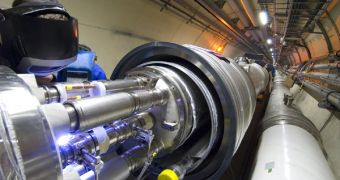New findings described in an issue of the journal Nature, dating from October 25th, announce the creation of three super-heavy isotopes of aluminum and magnesium: magnesium-40, aluminum-42 and aluminum-43, never before observed, suggesting that variations of elements might exist and that they are heavier than what the current scientific model predicts.
A team of scientists at the Michigan State University's National Superconducting Cyclotron Laboratory conducted the experiment in which they tried and succeeded to load neutrons onto already known elements and thus, they successfully managed to create three new stable isotopes.
A nucleus` stability can be probed by trying to find out how many neutrons can be loaded onto nuclei of more quotidian elements and this is the focus of much of the work at NSCL.
The atomic nuclei are formed of protons and neutrons, bound together by strong forces, known as the nuclear force, the same force as that unleashed by the explosion of an atomic bomb. Trying to load a neutron onto a uranium nucleus, a highly radioactive element, would make the nucleus extremely unstable and cause it to split and eject a lot of energy. But trying to load a neutron onto a more stable nucleus might result in a new isotope, stable or not. Creating and measuring new isotopes is something very difficult to achieve.
Elements with multiple stable isotopes are not a new thing. A good example of this is the elements that have the same number of protons and neutrons inside, the atomic nucleus. The most abundant stable isotope of carbon has six protons and six neutrons, however carbon isotopes such as carbon-13 and carbon-14 can also be found on Earth.
Another way to explore atom nuclei is by using accelerator facilities, trying to kluge together piles of protons. An element is defined by its number of protons. For example hydrogen has one proton, oxygen eight and uranium 92. In October 2006, a team of Russian and American scientists reported they had created an element that had 118 protons, the biggest number of protons in a nucleus ever recorded.
During an experiment earlier this year at NSCL, researchers created and detected three new super-heavy isotopes: magnesium-40, with 12 protons and 28 neutrons; aluminum-42, 13 protons and 29 neutrons; and aluminum-43, 13 protons and 30 neutrons.

 14 DAY TRIAL //
14 DAY TRIAL //